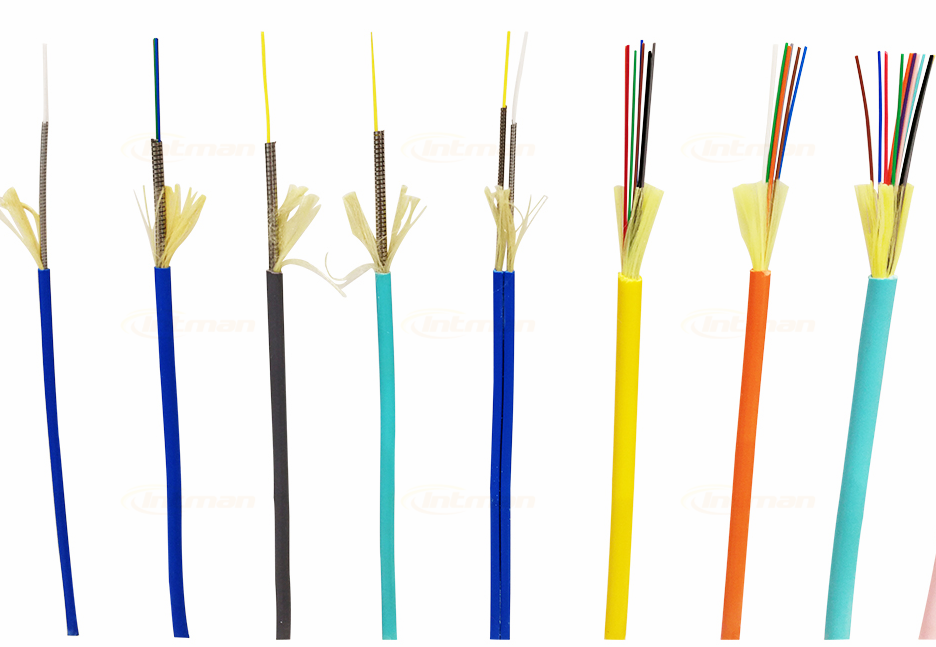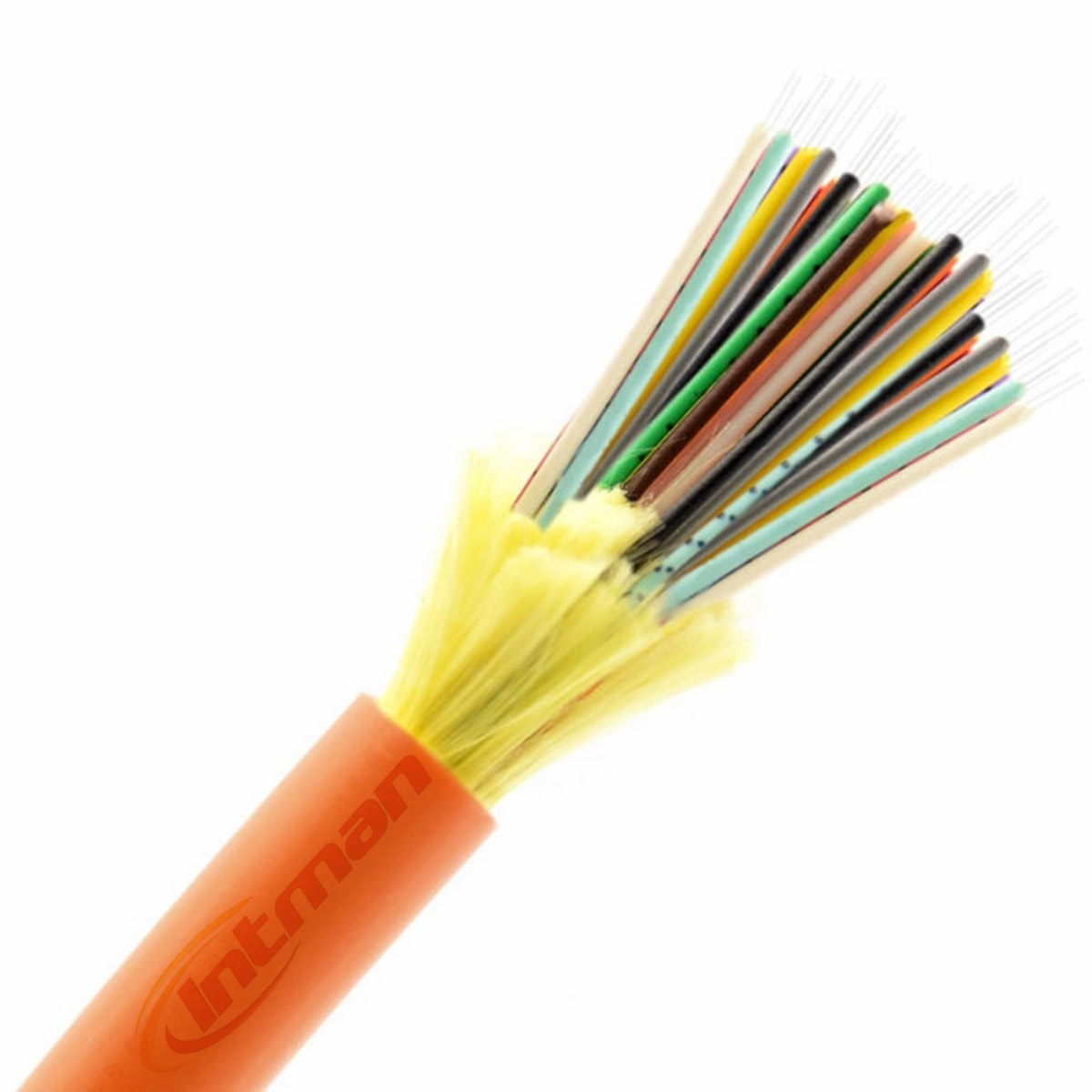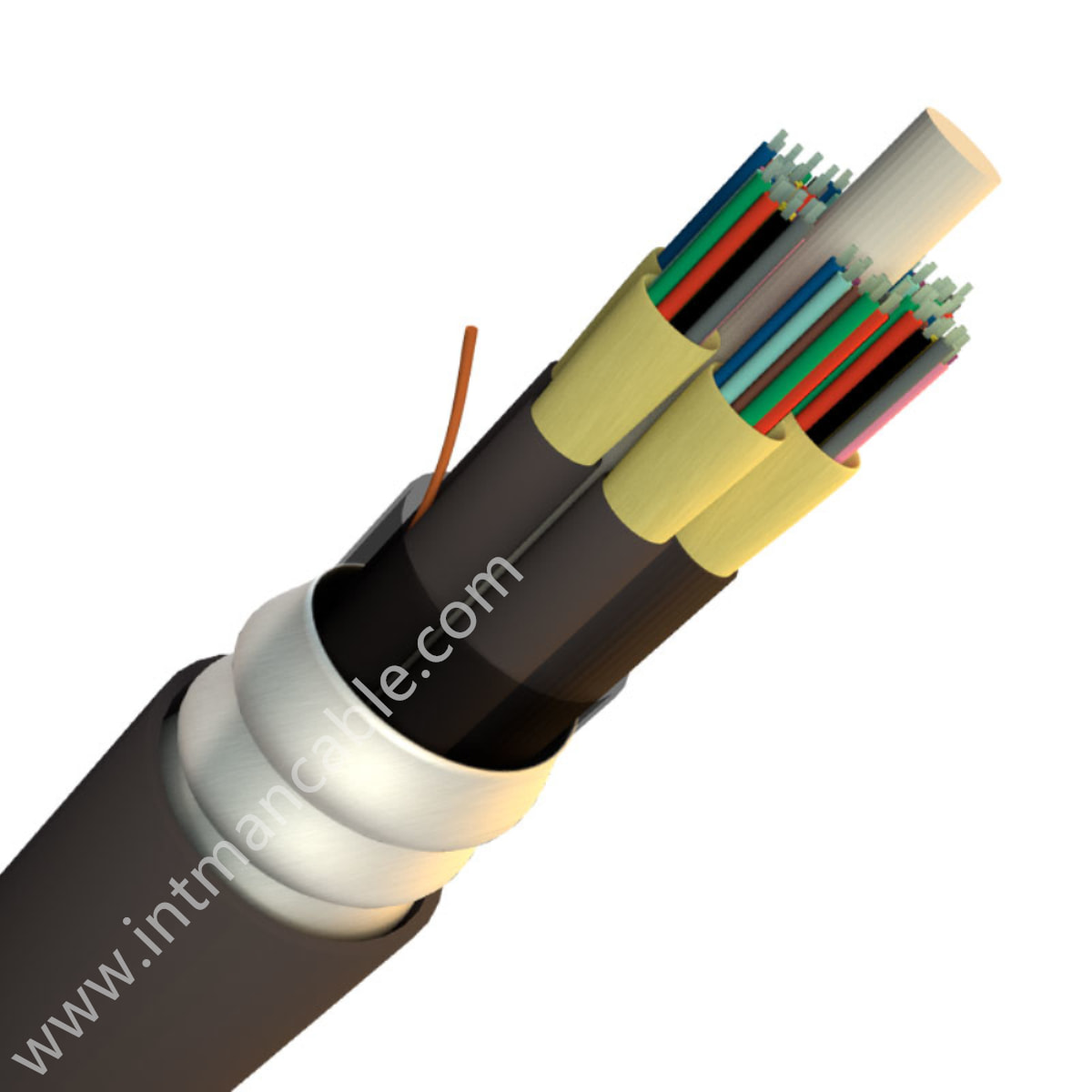by intman cable
Share
by intman cable
Share

Fiber optic cable is a type of communication cable that consists of one or more optical fibers that are used to transmit digital information. Unlike traditional copper cables, fiber optic cables use light to transmit data instead of electrical signals.
Fiber optic cables have several advantages over traditional copper cables, including:
- Faster speeds: Fiber optic cables can transmit data at much faster speeds than copper cables.
- Higher bandwidth: Fiber optic cables can carry more data over longer distances than copper cables.
- Immunity to electromagnetic interference: Fiber optic cables are not affected by electromagnetic interference, which can disrupt the signal in copper cables.
- Greater reliability: Fiber optic cables are less prone to damage from weather or other external factors, and require less maintenance than copper cables.
Indoor Fiber Optic Cable (FTTH indoor cable ,Simplex and duplex fiber optic indoor cable , breakout indoor cable 1-288core, distribution indoor cable 1-288core)
Outdoor Fiber Optic Cable
ADSS Double Jacket Cable , FTTH outdoor cables,GYTS Armored cable, GYTA Armored fiber optic cable, GYTC8S Figure 8 dropping fiber cable, GYFTY Non-metallic Fiber Cable, GYTY53,GYTA53 Cable
Hybrid fiber cable with copper power wires OPLC, Flame retardant mining fiber cable MGTSV, Flat fiber cable GYTXY, Central tube fiber cable GYXTW
Fiber optic cables are made of thin strands of glass or plastic called fibers, which are surrounded by protective coatings and insulation layers. The fibers are designed to be very flexible and lightweight, and they can transmit data over long distances without suffering from signal loss or interference.
Fiber optic cables have many advantages over traditional copper cables. They are faster, more reliable, and have greater bandwidth capacity, which means they can transmit more data at once. They are also more secure, as they are immune to electromagnetic interference and are difficult to tap into without detection.These cables are commonly used in telecommunications networks, internet service providers, cable television providers, and many other industries. They are also used in medical equipment, military applications, and industrial automation systems.
Overall, fiber optic cables have revolutionized the way we transmit data, and they continue to play an important role in modern communication systems.
STAY IN THE LOOP


